Radishes are now a staple crop in my garden. But the truth is, I didn’t like radishes until I grew them myself.
Grown at the right time of the year, and even cooked instead of eating them raw, radishes are now a staple crop in my garden. The colors that radishes can be are stunning!
White radishes, purple, colorful blends, and watermelon radishes!
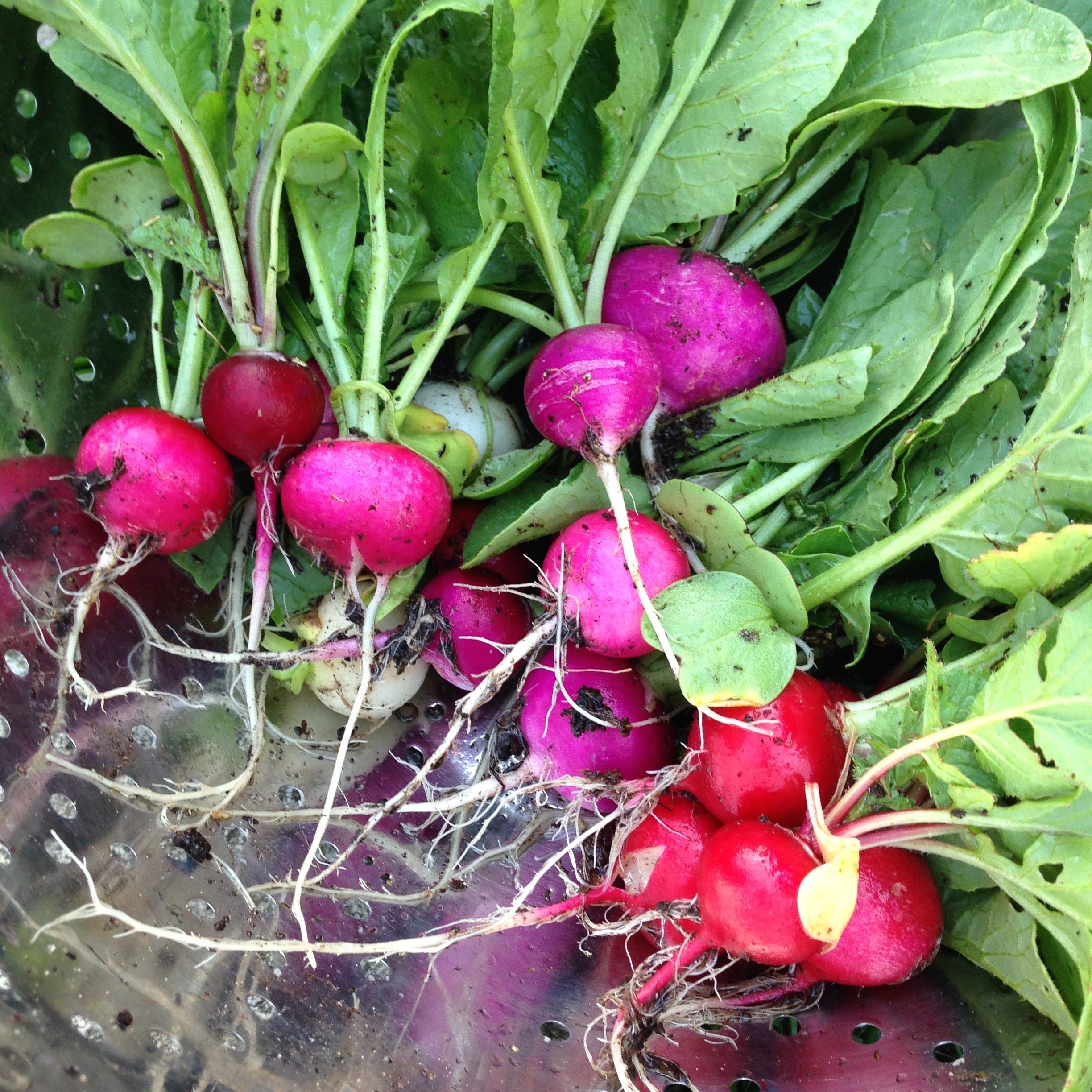
How to Grow Radishes
Latin
Raphanus sativus
Family: Brassicaceae
Difficulty
Easy
Season & Zone
Season: Cool season
Exposure: Full sun
Zone: All
Growing Season for Radishes
Radishes can be grown all season but are best grown in cooler weather. The heat and sun will make them bolt/go to seed and the root will get woody and spicier. Succession sow in the spring and fall in areas of hot summers or year-round in cooler climates. Excellent for inter-planting around other crops as you can harvest them promptly in 30 days before the other plant needs the space.
Growing Radishes from Seed
Direct seed. Sow seeds 5mm (¼”) deep, 25 seeds per 30cm (12″) in rows spaced 30-45cm (12-18″) apart, and thin to 6-12 plants per 30cm (12″).
Ideal pH: 6.0-6.8. Radishes are moderate to heavy feeders. Best in rich, loamy soil amended with composted manure.
Add 1 cup of complete organic fertilizer for every 3m (10′) of row for background fertility. Make sure you thin them so they have room to grow.
The best way to grow radishes is to sow them often. Succession sow every week in the spring and fall.
Harvesting Radishes
Harvest promptly when radishes are the size of large marbles. Leaves can also be eaten, although they’re a little prickly (better cooked down). The seed pods can also be eaten!
Raddish Diseases & Pests
Root maggots and flea beetles can be a problem. Expect to lose 20-30% of your crop to maggots if you don’t use a floating row cover.
Radish Varieties
If you’re looking for color go with ‘Easter Egg’ radishes or buy individual colors based on preference. Longer thinner varieties like ‘French Breakfast’ or ‘D’avignon’. Larger cold hardy varieties like the ‘Black Spanish’ or ‘Noir Long Maraicher’ are great for fall/winter gardening. You can also get the long daikon varieties which are often eaten in stir-fry or Asian cuisine. ‘Sweet Meat’ is even pink inside and there are also ones that are green inside!
Radish Recipes
- Roasted Radishes with Radish Greens
- Radish Leaf Pesto
- Rustic Radish Soup
- Crispy Roasted Radishes
- Radish Leaf Pesto
- Ginger Carrot Radish Salad
- Cinnamon Sugar Radish Chips
- Radish Butter
- Braised Radishes, Shallots and Bacon
- Lots of Fermented Radishes & Kimchi on Pinterest
I hope that if you’ve tried radishes before and didn’t like them you give them a second chance! They’re a fantastic pre or post bumper crop for you garden!
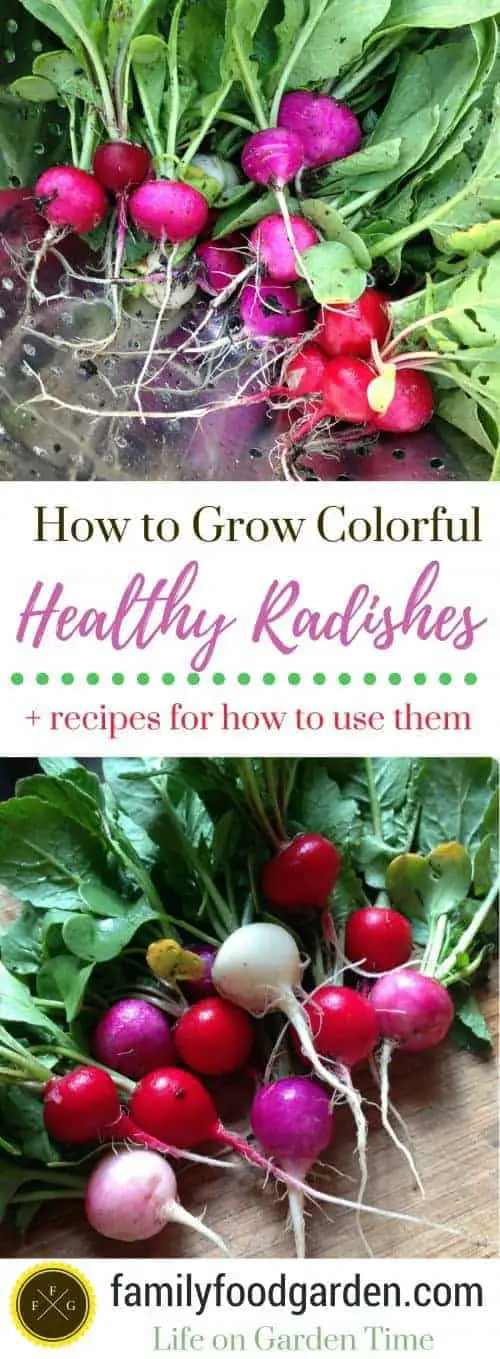

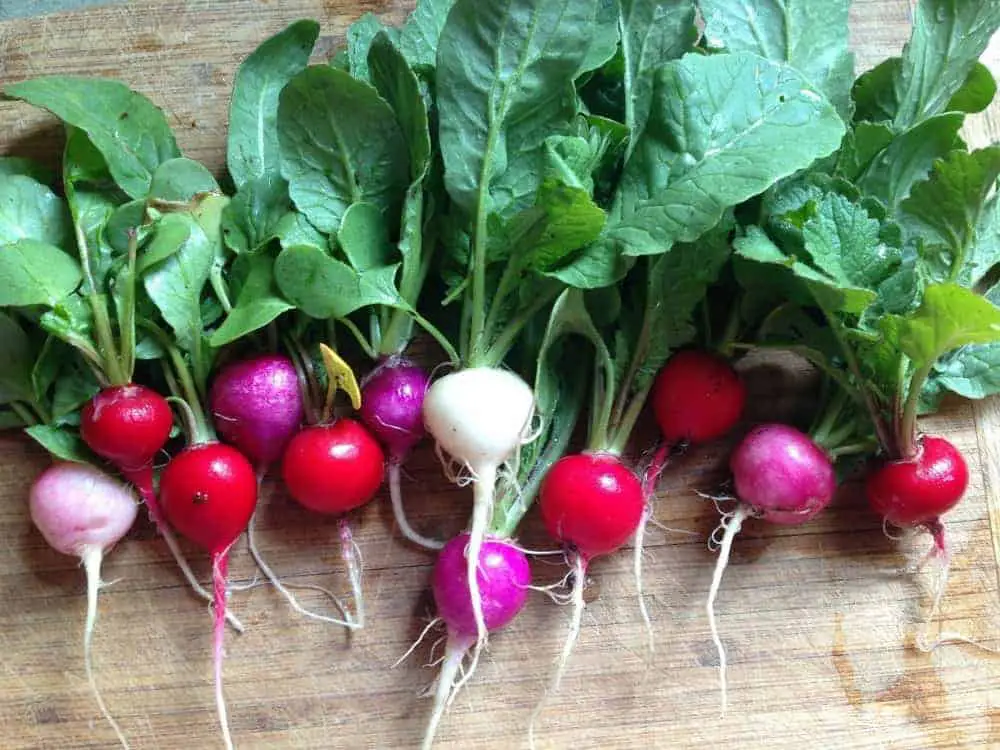
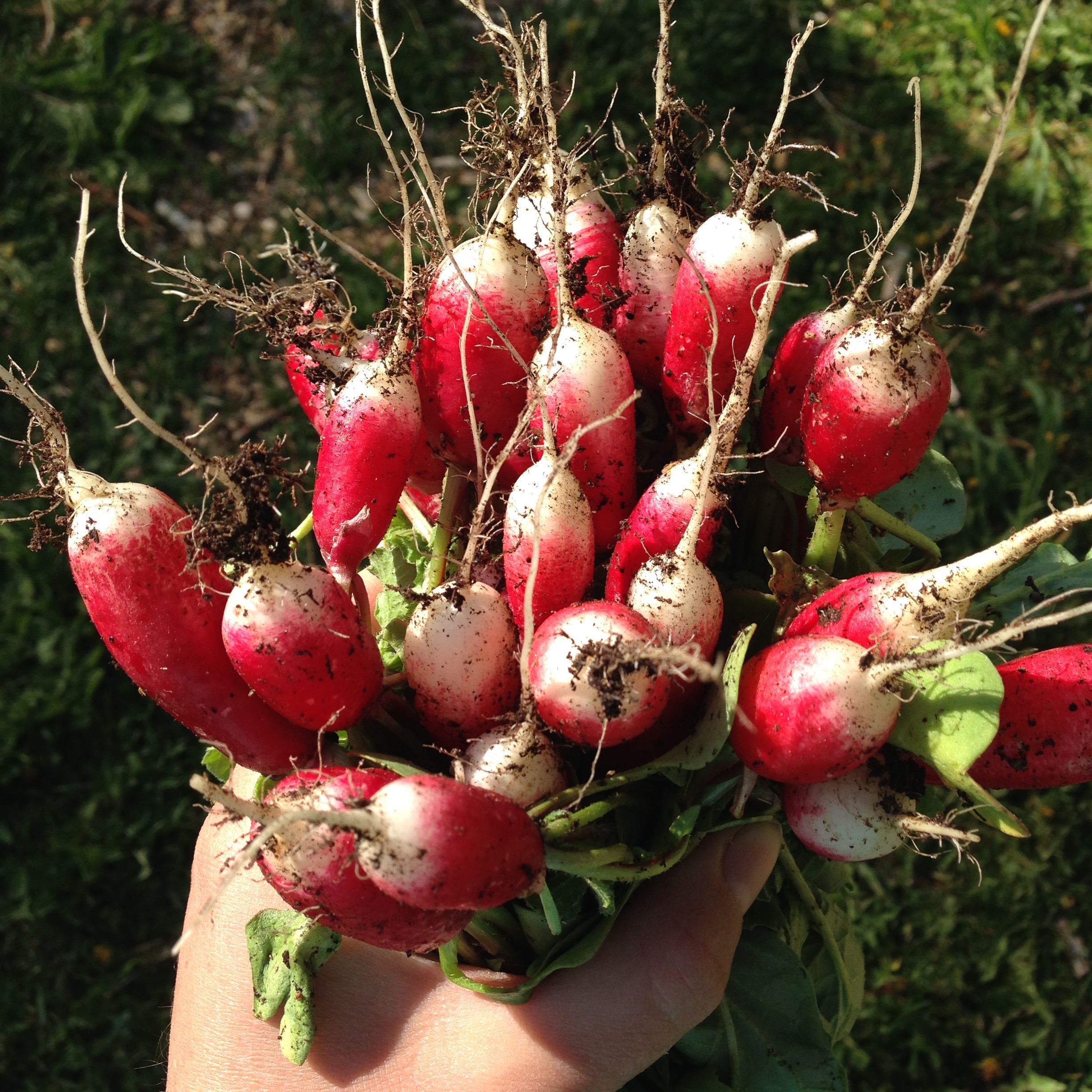
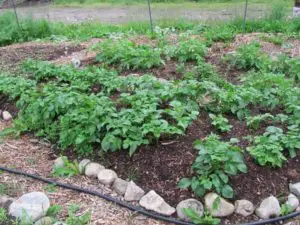
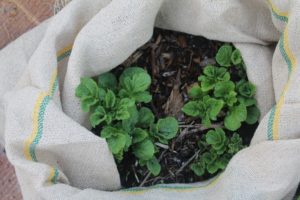
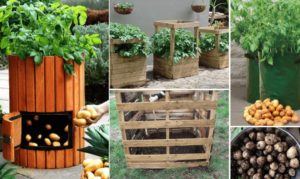
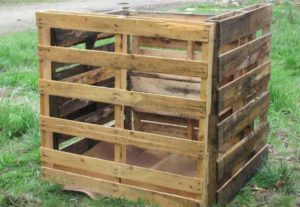
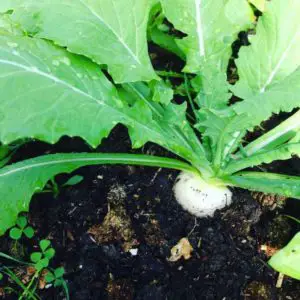
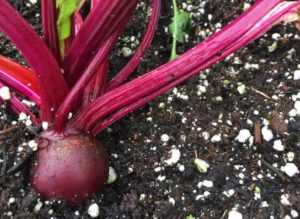
I always sprinkle a little salt in each roe before I plant the radish seeds ,,,no maggots or worms/tom iliffe
What a great idea!! Just table salt? Epson salts?